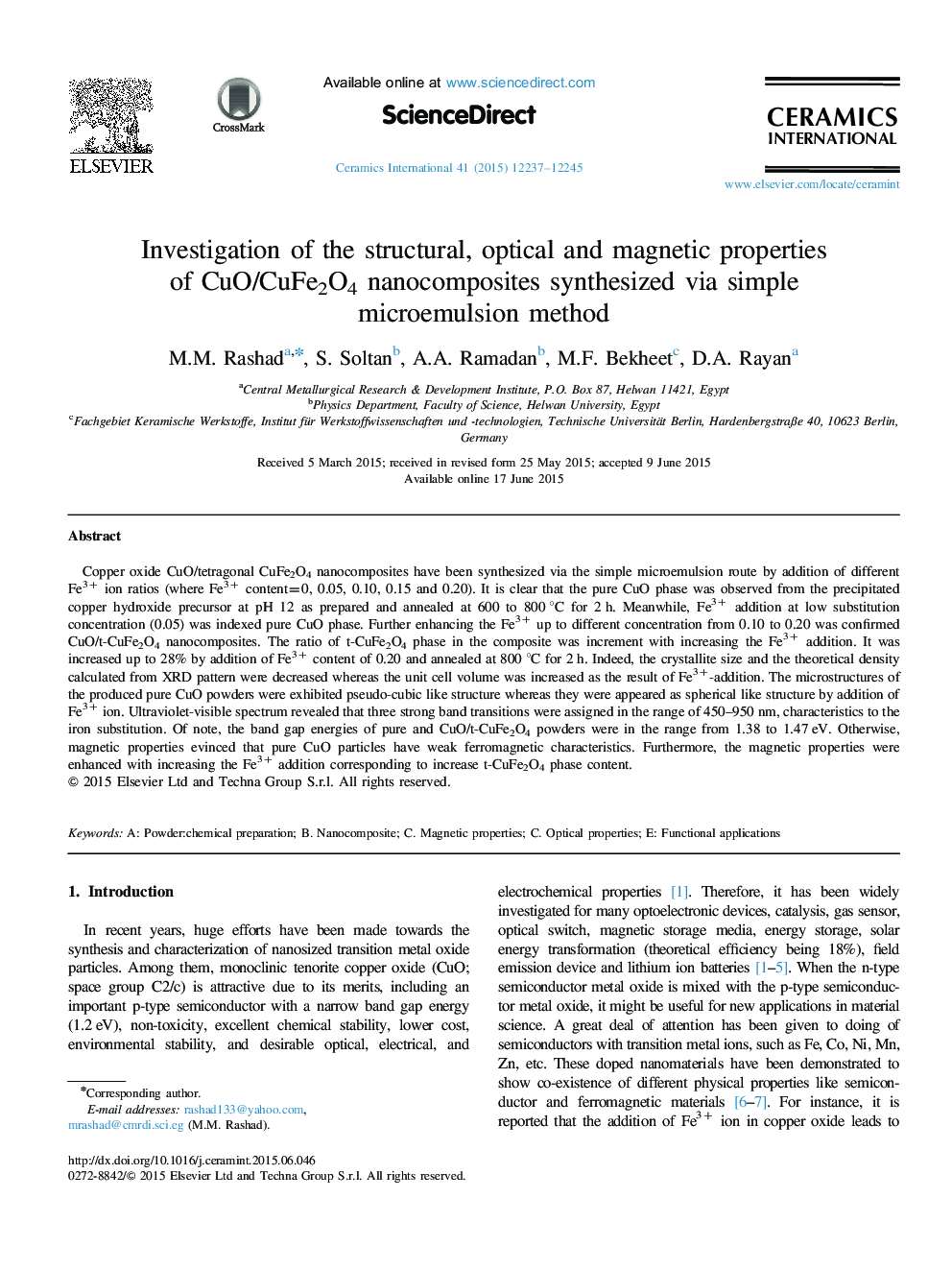| Article ID | Journal | Published Year | Pages | File Type |
|---|---|---|---|---|
| 1459967 | Ceramics International | 2015 | 9 Pages |
Copper oxide CuO/tetragonal CuFe2O4 nanocomposites have been synthesized via the simple microemulsion route by addition of different Fe3+ ion ratios (where Fe3+ content=0, 0.05, 0.10, 0.15 and 0.20). It is clear that the pure CuO phase was observed from the precipitated copper hydroxide precursor at pH 12 as prepared and annealed at 600 to 800 °C for 2 h. Meanwhile, Fe3+ addition at low substitution concentration (0.05) was indexed pure CuO phase. Further enhancing the Fe3+ up to different concentration from 0.10 to 0.20 was confirmed CuO/t-CuFe2O4 nanocomposites. The ratio of t-CuFe2O4 phase in the composite was increment with increasing the Fe3+ addition. It was increased up to 28% by addition of Fe3+ content of 0.20 and annealed at 800 °C for 2 h. Indeed, the crystallite size and the theoretical density calculated from XRD pattern were decreased whereas the unit cell volume was increased as the result of Fe3+-addition. The microstructures of the produced pure CuO powders were exhibited pseudo-cubic like structure whereas they were appeared as spherical like structure by addition of Fe3+ ion. Ultraviolet-visible spectrum revealed that three strong band transitions were assigned in the range of 450–950 nm, characteristics to the iron substitution. Of note, the band gap energies of pure and CuO/t-CuFe2O4 powders were in the range from 1.38 to 1.47 eV. Otherwise, magnetic properties evinced that pure CuO particles have weak ferromagnetic characteristics. Furthermore, the magnetic properties were enhanced with increasing the Fe3+ addition corresponding to increase t-CuFe2O4 phase content.
